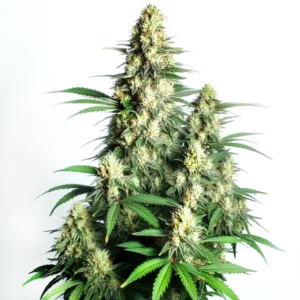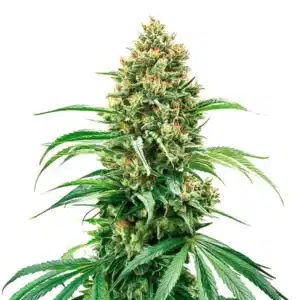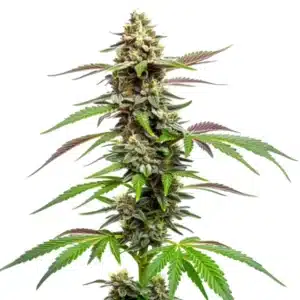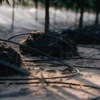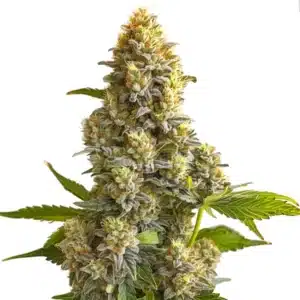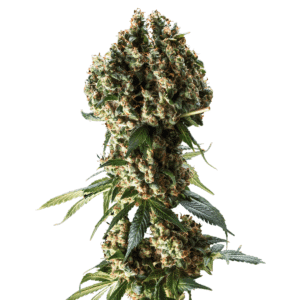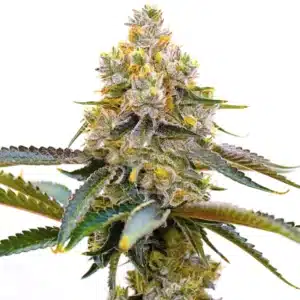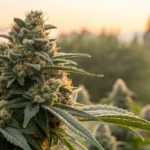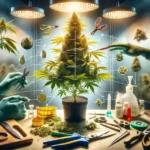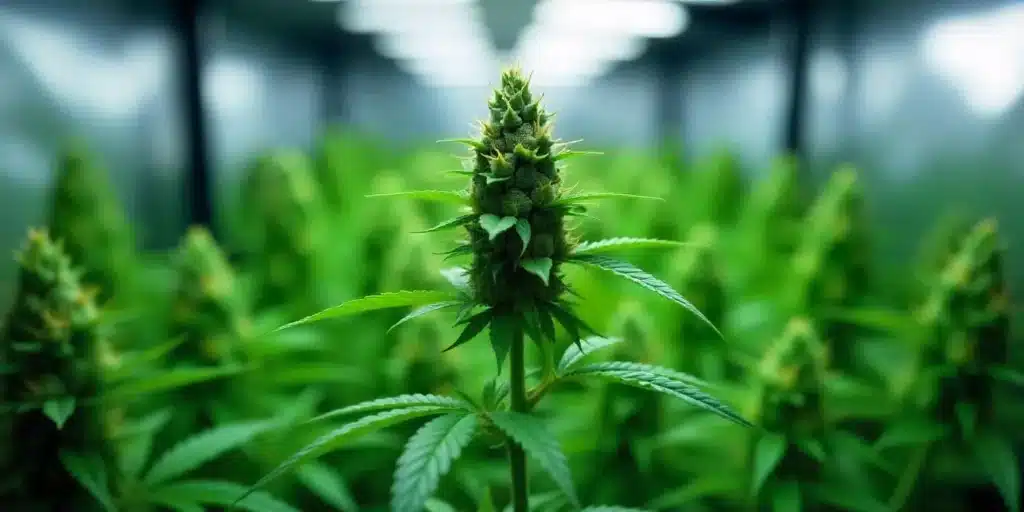
What are Weed Plant Nodes?
Weed plant nodes are an essential part of the growth process of cannabis plants. They are the points on the stem where branches grow out. The weed plant nodes and how they function can greatly improve your cannabis growing skills.
Every cannabis plant has a central stem, also known as the main stalk. This main stem has several branches coming out of it. The point where a branch comes out from the main stem is called a node.
Recommended Strains
Cream Auto
|
|
THC | 16% - 18% (Medium) |
|
|
Type | Autoflowering |
|
|
Yield | Medium |
|
|
Phenotype | 70% Indica / 30% Sativa |
Cream Candy Auto
|
|
THC | 19% - 24% (Medium) |
|
|
Type | Autoflowering |
|
|
Yield | Medium |
|
|
Phenotype | 80% Indica / 20% Sativa |
nodes play a crucial role in the plant’s growth and development, influencing the overall yield and quality of the buds. Knowing how to identify these nodes can help you understand your plant better and provide the best care possible.
The position of weed plant nodes on the stem is also of significance. They are not just randomly placed but arranged in a specific pattern that facilitates optimal growth and light absorption. This pattern also varies between Indica and Sativa strains of cannabis, contributing to their distinct growth habits.
How to Identify Weed Plant nodes
Identifying weed plant nodes is relatively simple. Look closely at your cannabis plant, and you will see the main stem and several branches coming out from it. The point where a branch comes out from the main stem is called a node.
Each node will have a branch and a fan leaf growing out of it. A characteristic of cannabis is the structure of these fan leaves, which develop a varying number of leaflets (or ‘fingers’). A young plant might start with a single leaflet per leaf, but as it matures, this can increase up to 13 leaflets, indicating healthy development. In some cases, you might also see a new bud forming at the node. Nodes alternate in direction as you move up the stem, which is a distinguishing characteristic of cannabis plants.
When you are learning how to identify weed plant nodes, it’s important to remember that not every leaf on the plant will have a node. Only those leaves that are attached to a branch have a node. Observing this can help you distinguish between leaves and nodes, especially in the early stages of plant growth when nodes are less prominent.
By practicing to identify weed plant nodes, you can also determine the overall health and development of your plant. A plant with healthy nodes will have a robust branching system, enabling it to support more buds and yield a higher harvest.
Internodal Spacing
The space between one node and the next is called the internodal distance. This spacing is a key indicator of your plant’s health and growing conditions. A very large internodal distance is often a symptom of ‘stretching,’ which means the plant is not receiving enough light and is growing tall and spindly as it searches for a stronger light source.
Internodal spacing is also heavily influenced by genetics and the plant’s sex. Generally, Sativa strains tend to have a larger distance between nodes, leading to a taller, more open plant structure. Indica strains typically have much shorter internodal spacing, resulting in a more compact and bushy plant. Furthermore, male plants often exhibit a larger internodal distance than female plants, which can sometimes be an early clue when determining the sex of your plants.
For most growers, a short internodal distance is ideal. The more nodes a plant has and the closer they are to each other, the more locations there are for flowers to develop in a concentrated area. This dense structure is a sign that the plant can support larger, heavier, and more abundant buds come harvest time.
Promos & Deals
Growth Stages of Weed Plant nodes
The growth stages of weed plant nodes are tied to the overall growth stages of the cannabis plant. During the vegetative stage, the plant focuses on growing as many leaves and branches as possible. This is when you will see the most nodes forming on your plant.
During the flowering stage, the plant shifts its focus from growing leaves and branches to producing buds. You will still see some new nodes forming during this stage, but not as many as in the vegetative stage.
The growth stages of weed plant nodes can give valuable insights into the plant’s life cycle and health. A plant that is developing many nodes during the vegetative stage and fewer during the flowering stage is following a normal growth pattern. Any deviation from this pattern might indicate a problem with the plant’s growth conditions, such as light, nutrients, or temperature.
Understanding the growth stages of weed plant nodes can also help you make informed decisions about when to prune, fertilize, or harvest your plant. For instance, a plant with many nodes in the vegetative stage could benefit from early pruning to stimulate more branching, while one with fewer nodes in the flowering stage might need extra care to increase bud production.
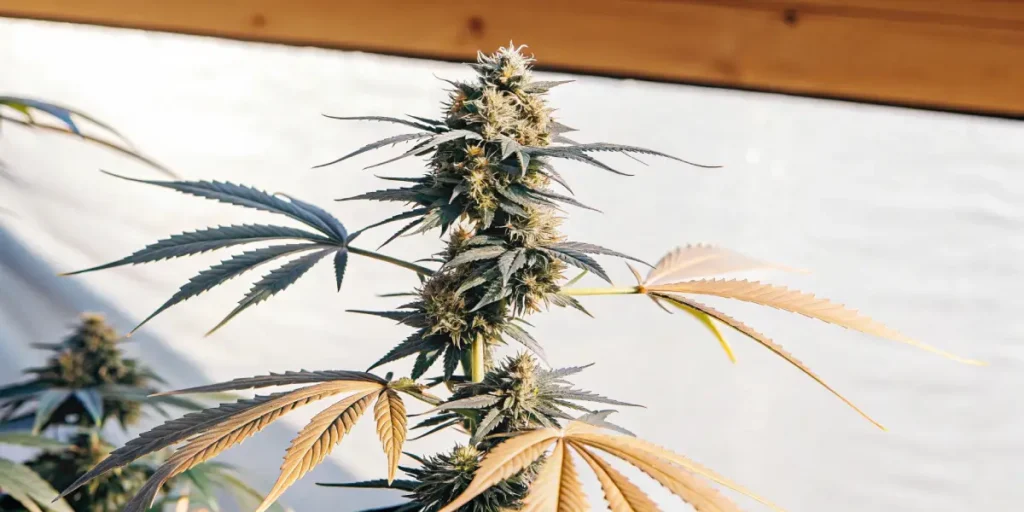
Importance of nodes in Weed Plants
nodes are essential for the growth and development of cannabis plants. They are the points where new branches, leaves, and buds form. This means that the more nodes your plant has, the more potential it has for producing buds.
Furthermore, nodes are also the points where the plant can channel nutrients and energy. A healthy node can help the plant grow stronger and produce better-quality buds.
The importance of nodes in weed plants extends beyond their role in growth and bud production. They also serve as indicators of the plant’s overall health. A plant with numerous, healthy nodes is likely getting the right amount of light, nutrients, and water. On the other hand, a plant with few or unhealthy nodes might be under stress and require attention.
Each node on a cannabis plant is a potential site for a new branch, leaf, or bud to form. Therefore, the importance of nodes in weed plants cannot be overstated. They are the key to a bountiful harvest, and understanding them can greatly enhance your cannabis growing skills.
Pruning Weed Plants at nodes
Pruning is a technique used by cannabis growers to improve the yield and quality of their plants. By carefully trimming the plant at the nodes, you can encourage it to grow more branches and buds.
When you prune your plant, you are essentially removing the lower branches that are not receiving enough light. This allows the plant to focus its energy on the upper branches that are in direct light, resulting in better growth and more buds.
Pruning weed plants at nodes is not just about cutting off branches. It’s a strategic move that can significantly boost your plant’s productivity. When done correctly, pruning can stimulate the plant to produce more branches and buds, leading to a higher yield.
Pruning weed plants at nodes also helps improve light penetration and air circulation within the plant. This can help prevent common problems like mold and pests, which often thrive in areas with poor light and airflow. By pruning your plant strategically, you can keep it healthy and productive throughout its growth cycle.

How to Count nodes on Weed Plants
Counting nodes on weed plants is a handy skill for any cannabis grower. Knowing the exact number of nodes on your plant can help you understand its growth pattern and plan your pruning strategy accordingly.
To count the nodes, start from the base of the plant and move upwards. Each point where a branch comes out from the main stem is a node. Keep count of these nodes until you reach the top of the plant.
Knowing how to count nodes on weed plants can also help you estimate the potential yield of your plant. More nodes usually mean more branches and buds, leading to a higher yield. However, it’s important to remember that the actual yield depends on many factors, including light, nutrients, and plant health, and not just the number of nodes.
By understanding how to count nodes on weed plants, you can better plan your growing strategy. For example, if you have a plant with many nodes, you might want to prune it more aggressively to encourage more branching and bud growth. On the other hand, a plant with fewer nodes might need a more conservative approach to ensure it doesn’t get over-pruned and stressed.
FAQs
Why are weed plant nodes important?
Weed plant nodes are important because they are the points where new branches, leaves, and buds form. The more nodes your plant has, the more potential it has for producing buds. Furthermore, nodes are also the points where the plant can channel nutrients and energy. A healthy node can help the plant grow stronger and produce better-quality buds.
For instance, the Tijuana strain from blimburnseeds.com is a Sativa dominant plant that has a tall growth pattern with multiple branches. This strain has several nodes, each capable of producing large, resinous buds.
The importance of weed plant nodes also lies in their role in shaping the plant’s structure. The branching pattern determined by the nodes affects how the plant absorbs light and nutrients, which in turn affects the plant’s overall health and productivity. Therefore, nodes are not just important for bud production but also for the plant’s overall growth and development.
Furthermore, weed plant nodes can be used to clone the plant. By taking a cutting from a node, you can grow a new plant that is genetically identical to the parent plant. This is a common technique used by growers to propagate their favorite cannabis strains.
How do I identify weed plant nodes?
Identifying weed plant nodes is relatively simple. Look closely at your cannabis plant, and you will see the main stem and several branches coming out from it. The point where a branch comes out from the main stem is called a node. Each node will have one or two leaves growing out of it. In some cases, you might also see a new branch or bud forming at the node.
nodes alternate in direction as you move up the stem, which is a distinguishing characteristic of cannabis plants.
Learning how to identify weed plant nodes is an essential skill for any cannabis grower. It helps you understand your plant’s growth pattern and make informed decisions about pruning and training. Moreover, it can also help you detect any potential problems early on, as unhealthy nodes can be a sign of nutrient deficiencies or pest infestations.
Identifying weed plant nodes is not just about locating them on the stem. It also involves understanding their structure and function. Each node consists of a leaf or branch and a bud site, and understanding how these components work together can provide valuable insights into your plant’s growth and development.
When should I prune my weed plants at the nodes?
It’s best to prune your weed plants during the vegetative stage when they are focusing on growing as many leaves and branches as possible. By carefully trimming the plant at the nodes, you can encourage it to grow more branches and buds, thus improving the yield and quality of your plants.
For example, the Critical Daddy Purple strain from blimburnseeds.com benefits greatly from pruning. This strain has dense foliage, and by pruning the lower branches, you can ensure that all the energy is directed towards the top, producing large and potent buds.
When pruning weed plants at nodes, it’s crucial to use sharp, clean tools to avoid damaging the plant or spreading diseases. It’s also important to prune strategically and not overdo it, as excessive pruning can stress the plant and reduce its productivity.
Pruning should be done with the plant’s natural growth pattern in mind. It’s generally best to prune the lower branches that are not receiving enough light, as they are unlikely to produce large, healthy buds. However, each plant is unique, and what works best for one may not work as well for another. Therefore, it’s important to observe your plant carefully and adjust your pruning strategy as needed.
How many nodes should my weed plant have?
The number of nodes on your weed plant can vary depending on the strain and growing conditions. However, a healthy cannabis plant will typically have several nodes. Each node is a potential site for a new branch, leaf, or bud to form. So, the more nodes your plant has, the more potential it has for producing buds.
For example, the Cream Caramel strain from blimburnseeds.com is a compact Indica dominant plant that has a fair number of nodes. By counting the nodes, you can get a clear picture of its growth pattern and strategize your pruning and training techniques.
The number of nodes on your weed plant can also be influenced by the plant’s age and size. Younger and smaller plants will naturally have fewer nodes than older and larger ones. However, a plant that is growing well should continually develop new nodes throughout its life cycle.
While the number of weed plant nodes can give you a rough idea of your plant’s potential yield, it’s important to remember that quality matters more than quantity. A plant with many nodes but poor overall health will likely produce fewer and lower-quality buds than a healthy plant with fewer nodes. Therefore, it’s crucial to provide your plant with the optimal growing conditions to ensure it can fully utilize its nodes to produce high-quality buds.
Can I influence the number of nodes on my weed plant?
Yes, you can influence the number of nodes on your weed plant through techniques like pruning and training. Pruning involves trimming the lower branches that are not receiving enough light, which allows the plant to focus its energy on the upper branches that are in direct light. Training involves bending and tying down branches to encourage the plant to grow more branches and buds.
Both these techniques can help increase the number of nodes on your plant, improving the yield and quality of your buds.
While you can influence the number of nodes on your weed plant, it’s important to remember that each plant has its own natural growth pattern that should be respected. Overly aggressive pruning or training can stress the plant and hinder its growth. Therefore, it’s crucial to find a balance between encouraging more node development and maintaining the plant’s overall health and well-being.
It’s also important to remember that the number of nodes is not the only factor that influences your plant’s yield. Other factors, such as light, nutrients, and plant health, are equally important. Therefore, while you strive to increase the number of nodes on your plant, don’t neglect these other aspects of plant care.



